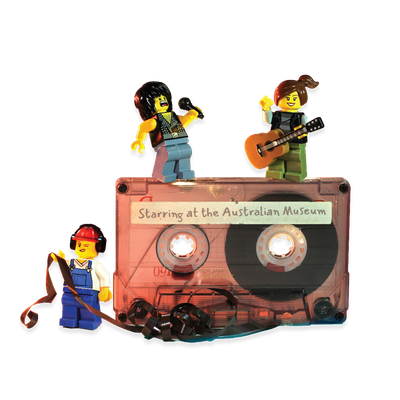Your search returned 102 results
By Page Type
By Tag
- All
- fish (966)
- blog (696)
- fishes of sydney harbour (401)
- First Nations (299)
- Blog (236)
- AMRI (169)
- archives (164)
- Eureka Prizes (146)
- Aboriginal and Torres Strait Islander (135)
- insect (126)
- Ichthyology (124)
- geoscience (109)
- minerals (102)
- climate change (99)
- podcast (94)
- Fish (91)
- Anthropology (89)
- International collections (80)
- Minerals Gallery (78)
- wildlife of sydney (78)
- Labridae (77)
- frog (74)
- gemstone (70)
- photography (66)
- history (64)
- Mollusca (60)
- gem (59)
- staff (59)
- Birds (56)
- Gems (56)
- Indonesia (56)
- education (56)
- shark (55)
- AMplify (54)
- people (53)
- earth sciences (50)
- exhibition (50)
- past exhibitions (50)
- Gobiidae (48)
- sustainability (46)
- Pomacentridae (45)
- Serranidae (44)
- lifelong learning (42)
- science (42)
- Earth and Environmental Science (41)
- Syngnathidae (41)
- Ancient Egypt (40)
- Bali (40)
- bird (40)
- dangerous australians (40)
-
Azurite
https://australian.museum/learn/minerals/mineral-factsheets/azurite/These large, golden tetrahedral chalcopyrite (copper iron sulphide) crystals on quartz matrix were purchased in the mid-1960s by Albert Chapman from John Cerlienco of South Australia.
-
Beryl (aquamarine)
https://australian.museum/learn/minerals/mineral-factsheets/beryl-aquamarine/Sapphire (aluminium oxide) can be many colours, but the beautiful blue we see most often is from traces of iron and titanium.
-
Dioptase on calcite
https://australian.museum/learn/minerals/mineral-factsheets/dioptase-on-calcite/This specimen shows a group of well-shaped rhombohedral pearly white calcite crystals with a liberal scattering of sugary emerald-green dioptase crystals.
-
Pyrite
https://australian.museum/learn/minerals/mineral-factsheets/pyrite/This fine specimen has large striated cubic crystals of pyrite (iron sulphide) and was acquired by Albert Chapman from the Tucson Gem and Mineral Show in the USA.
-
Amethyst geode
https://australian.museum/learn/minerals/mineral-factsheets/amethyst-geode/Brazil contains some of the deepest purple amethyst and largest geodes ever found. This impressive amethyst-lined geode shows hundreds of glittering crystals.
-
Sardonyx dish and stand
https://australian.museum/learn/minerals/mineral-factsheets/sardonyx/Sardonyx is a variety of chalcedony (silicon dioxide) with alternating brown to red and white to yellow bands.
-
Wulfenite with Mimetite
https://australian.museum/learn/minerals/mineral-factsheets/wulfenite/Wulfenite (lead molybdate) displays some of the most vibrant colours in the mineral world, from honey-yellow, orange and red to olive green.
-
Topaz
https://australian.museum/learn/minerals/mineral-factsheets/topaz-brazil/This huge, clear topaz crystal weighing 5.5 kg has a perfect and sharp crystal shape (orthorhombic crystal system) with a diamond-shaped cross-section.
-
Jasperised wood
https://australian.museum/learn/minerals/mineral-factsheets/jasperised-wood/This polished, richly hued slice of jasperised wood is from the Petrified Forest National Park, which covers parts of Navajo and Apache Counties in north- eastern Arizona, USA.
-
Manganite
https://australian.museum/learn/minerals/mineral-factsheets/manganite/Germany has produced some of the largest and best manganite (manganese hydroxide) crystals in the world, as shown by this superb example.
-
Discover more
2025 Australian Geographic Nature Photographer of the Year
Special exhibition
Free entry
Now open -
Discover more
Unfinished Business
Special exhibition
Free entry
Now open -
Discover more
Wansolmoana
Permanent exhibition
Free entry
Open daily -
Find out more
Burra
Permanent kids learning space
Free entry
10am - 4.30pm![]()
-
Discover more
Minerals
Permanent exhibition
Free entry
Open daily![]()




